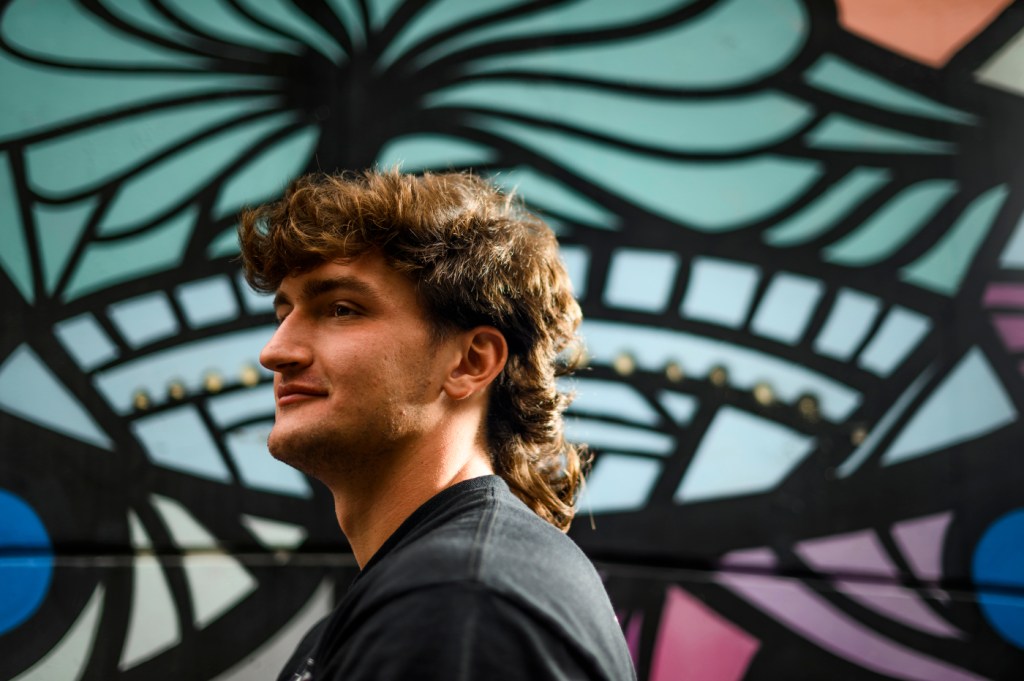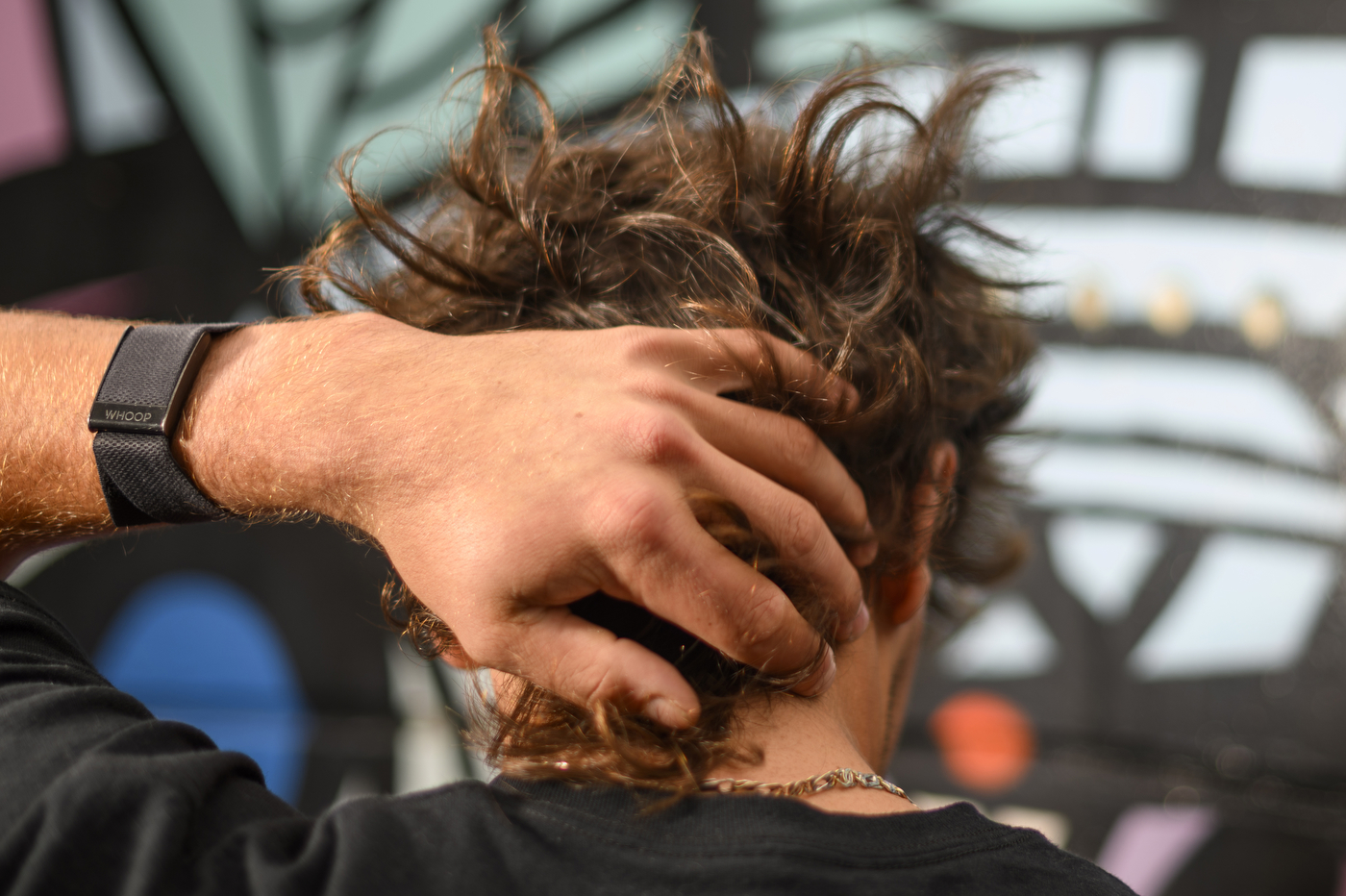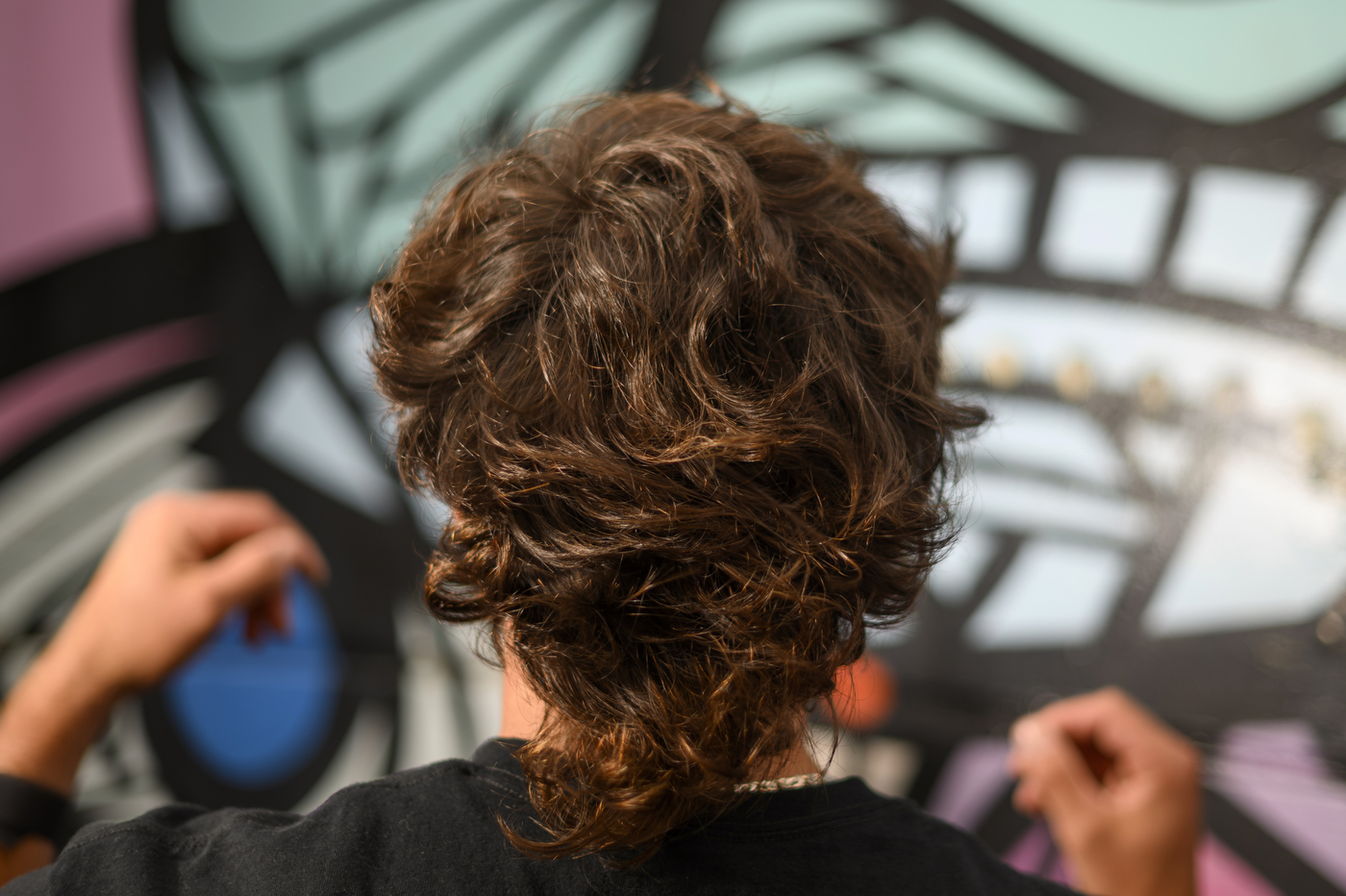‘Business in the front, party in the back.’ Are mullets making a comeback?

Gregory “Boz” Bozzo wears a mullet all year long, but it “pops” during the baseball season, flowing out the back of his helmet.
Boz, a third-year business major and catcher on Northeastern’s men’s baseball team, originally got a mullet because “I thought it would look cool,” he says. His dad had one, with his hair down to his shoulders, and he loved it.
Now, four or five years later, his is a bit overgrown.
“It’s kind of off and on with how unique it is,” he says, but he’ll get it cleaned up before the start of the season.
“His hair always sticks out to me,” says Brandon Poli, assistant director of athletics communications at Northeastern.



Mullets have always garnered attention.
Look at David Bowie, John Stamos and Andre Agassi. Like many male celebrities of the 1970s and ‘80s, they all sported mullets, a trend that peaked and then steadily declined in the following decades.
As it turns out, though, mullets didn’t go away. In fact, they appear to be making a comeback.
“It’s fascinating how it keeps coming back over and over again,” says Frances McSherry, a teaching professor who teaches fashion history at Northeastern’s College of Arts, Media and Design. “I think we’re at a time right now where the mullet is resurfacing and reinventing itself.”
What exactly is a mullet? The expression “business in the front, party in the back” sums it up nicely. McSherry says a “true mullet” has short hair on the front and sides and long hair in the back. Kevin Begola, founder of the USA Mullet Championships, takes the definition one step further.
“Really, a good mullet has got to start behind the ears. You’ve got to see the ears exposed,” he says.
There’s evidence to suggest that the hairstyle has always been around, for practical reasons or for fashion. “It goes way back, the idea that the ancient Greeks, the ancient Egyptians all were sculpting their hair for individuality, comfort and practicality,” McSherry says. She also notes that it’s easy to maintain.
But in the ‘70s, she says, the mullet took on a new significance in the United States as glam rock and “antifashion” took off.
“I think it was most valuable to people in the second part of the 20th century, because we see a real turn away from normal styles around the 1970s,” she says.
“I think we’re in a similar place right now,” McSherry says.
As gender norms come under cultural scrutiny, she says, it’s not surprising that a hairstyle that bridges men’s and women’s fashion is making a comeback.
The androgyny of the look is part of what makes it subversive. Begola notes that men in uniform—servicemen or police officers, for example—often aren’t allowed to have long hair.
“I think it’s somewhat counterculture,” Begola says. This has given the hairstyle a cultural power on par with the mohawk, he says, in terms of how it polarizes opinions. But the mullet is also unique in that it can be worn ironically.
Or, if you’re like Bozzo, you just happen to like it. Boz’s mullet is classic, but many modern mullets are anything but. In the past few years, Begola says, he’s seen mullets evolve, especially in kids, who get designs—such as the American flag—carved into the sides. The 2023 USA Mullet Championships kids’ division winner sports a mullet-mohawk combo. This, McSherry says, is a benefit of the mullet—it can be customized to each individual.
For his part, Begola attributes the rise in popularity of mullets to the COVID-19 pandemic. “Obviously a lot of people didn’t get haircuts,” he says. “The mullet started coming back hardcore during that time.”
Since he founded the USA Mullet Championships in 2020 to help market his business, Begola has seen interest boom, with 450 people entering the men’s competition this year. That event enters its final stage on October 7, and half of the proceeds go to Stop Soldier Suicide.
During his time running the competition, Begola says he’s noticed that a certain type of person is drawn to the mullet. “They typically live a more carefree lifestyle; they have a lot of fun,” he says. In fact, he says, “the mullet community” is like the “community” of people who drive Jeeps and wave to other Jeep owners. “Mullet people are similar like that,” he says. “They feel like they’re part of a club. They know they’re outsiders.”
Boz says he relates to the camaraderie that comes with having a mullet. “When I see a good mullet, I definitely recognize it,” he says. “I’ll get a lot of comments about mine, and I’ll give out compliments when I see a good one.”
Boz is seeing more of them now, and it’s a good thing, he says.
“Let’s bring the mullet back.”
For media inquiries, please contact media@northeastern.edu.






